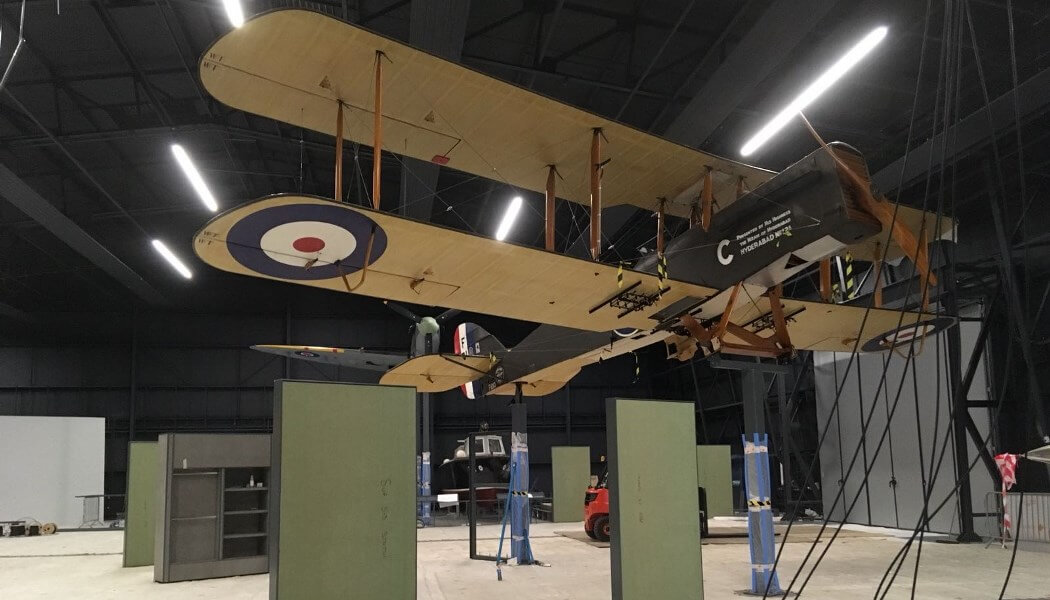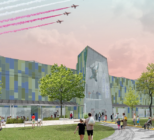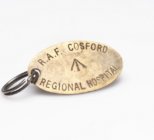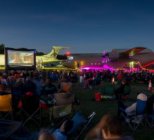The Museum is now in the latter stages of this RAF Centenary Transformation Programme and has partnered with The Hub to fit-out the exhibitions and displays over the two sites. M+H Advisor talks here to the RAF team behind the redevelopment and provides a case study with The Hub’s Project and Design Manager.
The founding phase of the RAF Centenary Transformation Programme was the development and installation of the First World War in the Air gallery in London and small display in Cosford that opened in December 2014, winning Best Heritage Project at the National Lottery Awards 2015. Specialist fit-out contractors, The Hub, completed the build and installation for this project and also won the tender last year to complete the centenary projects. The capital works at the London site will all be delivered this June with official openings and activity programmes. Prior to that, smaller displays at RAF Cosford, mirroring the new stories being told at the London site, were unveiled at a special 100 Years of the RAF Festival over Easter weekend that marked the official 1 April date when the RAF was established a century ago.
The centenary projects will not only improve the sharing of the RAF story and visitor experience but also increase visitor numbers.
Both sites are free to enter and will now tell the fascinating story of the RAF and of the thousands of ordinary servicemen and women who have served and still serve in the RAF and whose invaluable contribution has shaped the world that we live in today. The Museum is a charity and a national museum but unlike many other national museums is funded through the Ministry of Defence rather than the DCMS. The centenary programme has been funded by a range of supporters including the Heritage Lottery Fund and BAE Systems.
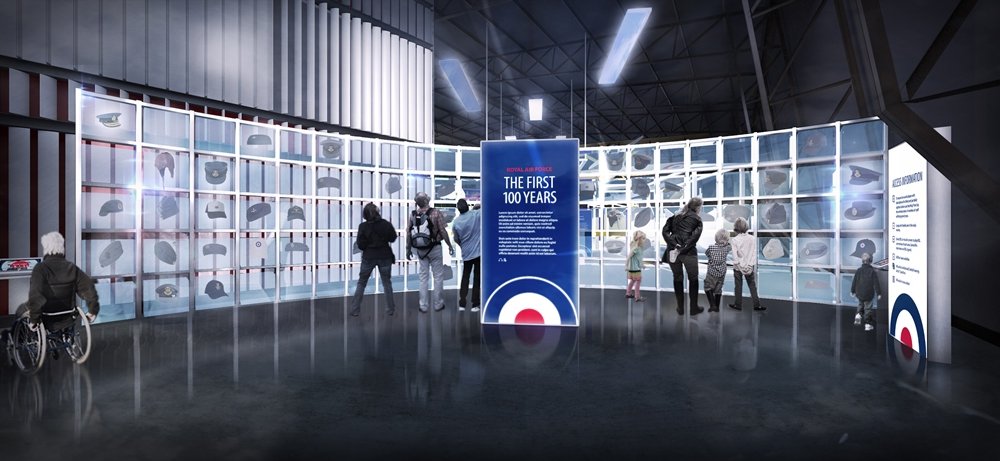
“The aim of the Museum is to tell that RAF story through people and collections,” says Karen Whitting – Director of Content and Programmes. “Up until now the Museum had been focussing on the story of aviation through the aircraft in the collection. While the aircraft remain very important to us – and the nation – we will be telling the story in a different way, which we think will be more engaging to a broader visitor profile and especially visitors who are coming to us now and have no direct connection with the RAF or the military.”
The RAF Centenary Programme and the transformation at the London site is made up of a number of projects. One of these focuses on the landscape and the threshold, which will transform, says Karen, a previously unwelcoming museum, which lacked clarity as to visitor orientation and a sense of heritage and history for the site itself.

The site has a 100-year history, previously functioning as the London Aerodrome and then RAF Hendon, before it became a museum in the 1970s. But through visitor research it was apparent that visitors had no sense of its layered past. Now, following landscaping, which introduces the idea of the old airfield through a concrete taxi way that takes people around the site and a central green airfield space, the Museum is able interpret this story at an early stage of the visit while also improving visitor facilities such as the creation of a new car park, wayfinding and signage and a new entrance that leads visitors to a single point of entry and exit.
“We will be able to provide an amazing warm welcome for all our visitors when they arrive.” says Karen. “We will be offering a personal visitor experience as well. This will be achieved through the training and development of our staff and volunteers so that when visitors arrive they can have a sense of what the experience is going to be like for them, what options they have and what they want to do on their particular visit.”
As a free Museum this element is important because they want visitors to return on numerous occasions to enjoy the different experiences. As part of the redevelopment there are a number of layers that the visitor experiences through the site such as a new restaurant, which has brought a derelict 1930s RAF building back into public use. This space will be used to interpret the story of the site as a visitor attraction throughout its history, when as an aerodrome it hosted air shows and air races to attract people to sign up for flying lessons and before that the hosting of RAF air pageants from the 1930s.

The Hub
The Museum is also developing three new exhibitions, which The Hub is currently fitting out: Hangar 1 will be transformed with two new exhibitions: the First 100 Years of the RAF display – focusing on the people of the RAF through its lifetime and Now and the Future. The third explores the more recent history of the RAF from the Falklands to the present day.
The First 100 years of the RAF will be an introductory exhibition for those visitors who don’t have expert knowledge of the history and perhaps don’t know where to start. It’s been designed for families and The Hub is managing the technical design, development and installation.
The second exhibition is about the RAF today and where it’s going in the future, which is digitally based and encourages visitors to debate the issues that face us as a society, which then also connect to the RAF such as issues around artificial intelligence, the rise of the robot and where we might want to, or not want to go as a society and what implications that has for the RAF going forward.
“It encourages people to participate in missions, design aircraft and allows visitors to detect, defend and decide a course of action around a number of story lines. For example to find a particular target with the defend element revolving around a hacker challenge exploring the RAF’s role in cyberspace, which probably most people aren’t aware of. It asks the questions, what are you going to do with that intelligence? Are you going to make an attack? Or do you decide not to?”

The third exhibition is a deep dive into the most recent chapter of RAF history, which looks at the Falklands War through to the present day through a number of missions the RAF has delivered over that time and highlighting particular aircraft that it has been using.
“We are setting all of that into context through a giant interactive timeline because visitor research shows that even in the past decade people are unsure about the order that things have happened. So we are setting what the RAF has been doing into a cultural context – for example what was happening in music and the world in that period.”
The Hub was shortlisted to fit-out the exhibitions through the detail and interest they showed for the project. Sofia Henriques, Exhibitions and Interpretation Manager at the RAF Museum, says that exhibition fit out programmes can be quite stressful and it was very important to choose not only the best company that could present the best value for the Museum’s budget but one that has the right people and competence. “The Hub offered very good economic value but they also provided a personal component. It is essential to work with people who are focused on the delivery of the project on time and also be able to provide the quality we are expecting. We have a gantry structure in one of the galleries and The Hub were able to ensure that the sub-contractors worked to the level of quality that we wanted – they worked with us rather than against us. The attention to detail and the quality of all the metal work and welding has been excellent.”
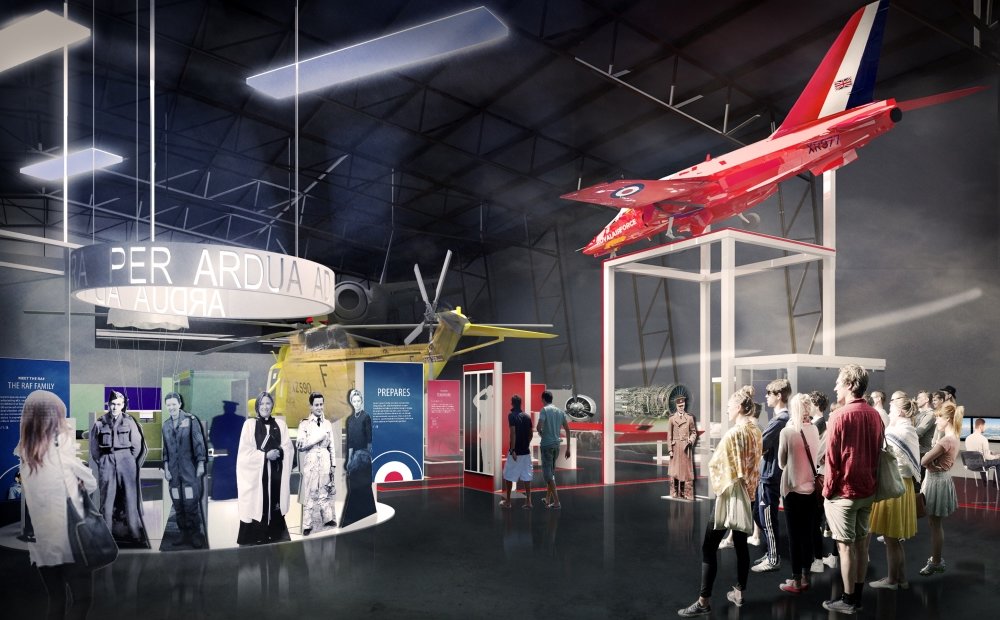
The fit-out has happened while the attractions have remained open and because the Museum has many large objects that use cranes for installing objects at height, The Hub has had to demonstrate competence in structural analysis. “The way that The Hub has worked with us and our suppliers who have been doing the rigging, and the RAF who have helped us rebuild aircraft, has been positive and they have had to adapt a lot through that process but they deal with the surprises very well,” says Karen.
At Cosford, the RAF Museum has changed an introductory space in one of its hangars to create displays which reflect a micro version of what has been developed for London though Karen says this doesn’t make them any easier to build because that site is still welcoming visitors.

To compliment the exhibitions there are three main strands of activity programmes. One is a rebalancing of the Museum’s learning provision to focus on the science technology engineering and maths agenda. “It’s something that has underpinned the technological side of the Royal Air Force experience and service and is something that we haven’t really provided before through our London site. We’ve had a very historically based learning programme,” says Rebecca Dalley – Head of RAF Centenary Programmes.
The second strand is a digital programme that is designed to help people connect to the RAF story through contribution and access to a website called RAF Stories. They will be able to upload their own content to tell the world how they are connected to the RAF story, either through a family member, their own experiences and enthusiasm or to access other people’s stories and respond to those. This programme is launching next month as part of the RAF’s centenary activities and is also a national programme with the museum partnering with organisations across the country to populate and popularise it and there will be the launch of an app to go with it later in the summer.
Local community
The third activity programme is focused on the local community. The RAF Museum in London is located on a 20-acre site on the corner of what used to be the enormous airfield of London Aerodrome and then RAF Hendon. The runways were built over in the 1960s to become a housing estate called the Grahame Park Estate named after the founder of the airfield. The estate is currently undergoing a major regeneration, as is the whole of the local area, which is known as Colindale and the Museum is partnering with local community organisations, mostly in the footprint of the old RAF Hendon airfield, to engage them with the heritage beneath their feet.
“Some of that is bringing them to the Museum and co-curation activities, for example, are helping out with the interpretation going into our new restaurant,” says Rebecca. “We have also partnered with the local colleges and schools but also going out to the estate itself and engaging those people who might not normally cross the threshold of the Museum. We are finding out from these people how we can raise aspirations locally and to address a range of issues.”
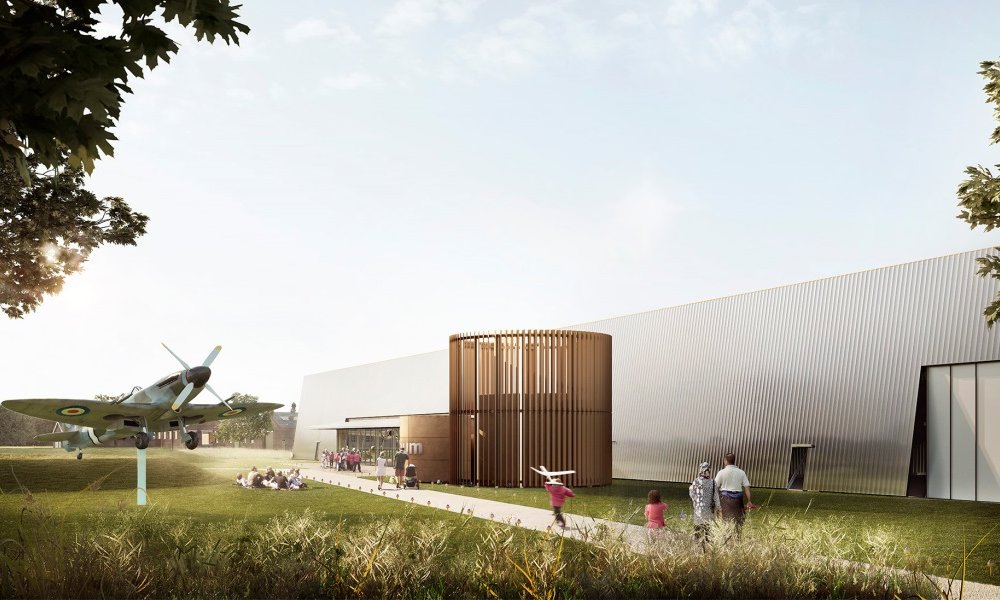
One of the change projects that the Museum ran on the way to getting to its current transformation was a temporary exhibition called Pilots of the Caribbean, which it says really highlighted the role that people from diverse backgrounds had in the RAF, and which was perhaps a hidden history. “Now we are saying that’s not just a temporary exhibition, these stories have absolutely got to be obvious in all of our permanent galleries so that anybody who comes to visit can find a reflection of themselves in those galleries and therefore find their way into the interpretation and the story telling,” Karen says.
The research the team carried out on people’s knowledge of the RAF at the start of the transformation showed that most people were unclear on what the RAF does. The stock response was that the RAF flew planes, which wasn’t really a purpose. “The RAF has a purpose to defend the UK and to give the UK choices in times of crisis. So, the Museum has chosen to construct its new exhibitions using these people’s stories and theme them in a way that explores the various aspects of the RAF to either defend or project power or train people or to support humanitarian activity.” In doing so they hope that visitors will get a slightly more nuanced understanding of what the purpose is of the Royal Air Force its new technology and the resources required to carry out its role.
And this is isn’t the end of development as this summer the RAF Museum will move its efforts to Cosford and then at the end of the year will start masterplaning for the final phase of projects in London. “We have three more hangars that are yet to be redeveloped and a lot of back of house space, office space, and logistic space still left on the London site to be redeveloped, which we just couldn’t fit in the programme for this year and will be fundraising again for that,” says Karen. The museum has also devised a legacy programme, which will focus on Cosford and has been working on masterplans with Buttress architects to reach a vision of what the next 10-20 years might look like for that site – ensuring the next 100 years of the RAF story gets off to a flying start at the Museum.
At next month’s Museums + Heritage Show the RAF Museum will be giving a talk entitled: Cultural Change Through Community Partnership. Register for free here.
RAF and the RAF Museum
1 April 1918 – RAF formed as the world’s first air force to become independent of army or navy control
15 November 1972 – RAF Museum founded


